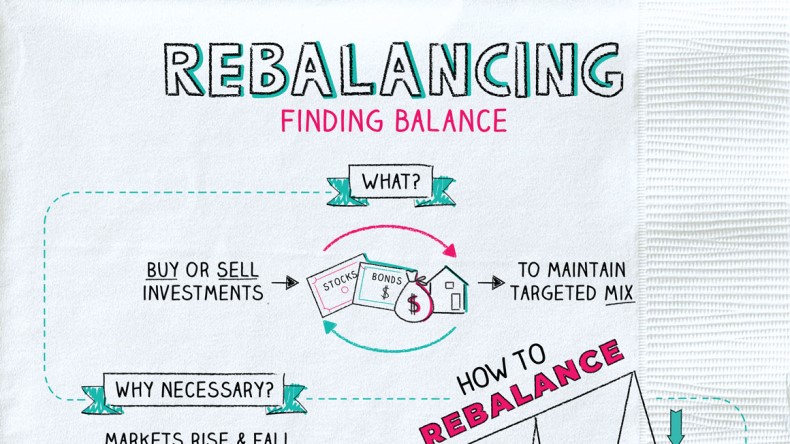Many investors missed an opportunity in March to use a simple investment strategy. The strategy increases investment returns and reduces risk over time. While most investors followed the media closely as markets declined and fretted over whether to reduce their stock holdings, those who followed the strategy were less anxious, and their portfolios fared well.
The simple strategy is known as rebalancing. Many institutional investors, such as pension funds and endowments, use it systematically. Among individual investors, rebalancing is perhaps the most neglected investment action.
You set up a portfolio with a certain asset allocation, called a target allocation. A typical allocation is 60% of the portfolio in stocks and 40% in bonds.
Whatever your target allocation is, over time the markets change the allocation. Some investments will rise in price while others will decline. Among investments that rise, some will rise more than others. The same will happen among investments with declining prices. Your portfolio will stray from its target allocation, and at some point it strays too far from the target allocation. That causes both a problem and an opportunity

The problem is that the risk and return profile of your portfolio has changed. When you set up the target allocation, it was because that allocation over time would give you the combination of risk and return most likely to meet your goals and be consistent with the level of risk you are comfortable with. When market moves change your portfolio’s allocation, the risk and return profile of your portfolio changes.
When the risky part of your portfolio, such as stocks, are in a bull market, after a while stocks will be a higher percentage of your portfolio. If your target percentage for stocks was 60%, it might climb to 70% or 75% in a bull market. That means your portfolio has much higher risk than when you started. When the next bear market or correction hits, your total portfolio loss will be higher than you planned. It’s time to rebalance by selling some of the stocks that have done well and buying more of the investments that haven’t done as well.
The opportunity created by rebalancing is that you’re selling high and buying low. You rebalance by selling, or otherwise reducing, the investments that have done well and buying those that haven’t done as well.
Look back at the stock market decline in March. Panic buying and forced selling drove prices of most assets down, especially stocks. As markets were declining, an investor with a systematic rebalancing strategy would have purchased more stocks near the market bottom of March 23. By increasing the stock allocation after stocks declined significantly, the portfolio is likely to return to its previous high value faster. It will own more stocks during the recovery than if the investor hadn’t rebalanced. The higher stock allocation gives the portfolio a higher return when stocks bounce back than it would have had at the lower stock allocation.

A problem many investors have is they turn rebalancing into a market timing exercise. They wait to rebalance until they think markets have hit bottom.
Rebalancing should be systematic and unemotional. You should rebalance after the portfolio allocation has changed by a fixed amount. You determine in advance how much you’ll let the portfolio’s allocation change before bringing it back to target. You might find yourself regularly reducing stocks during a bull market and buying stocks during a market decline.
Studies show that systematic rebalancing increases long-term investment returns above a buy and hold strategy while reducing risk and volatility.

